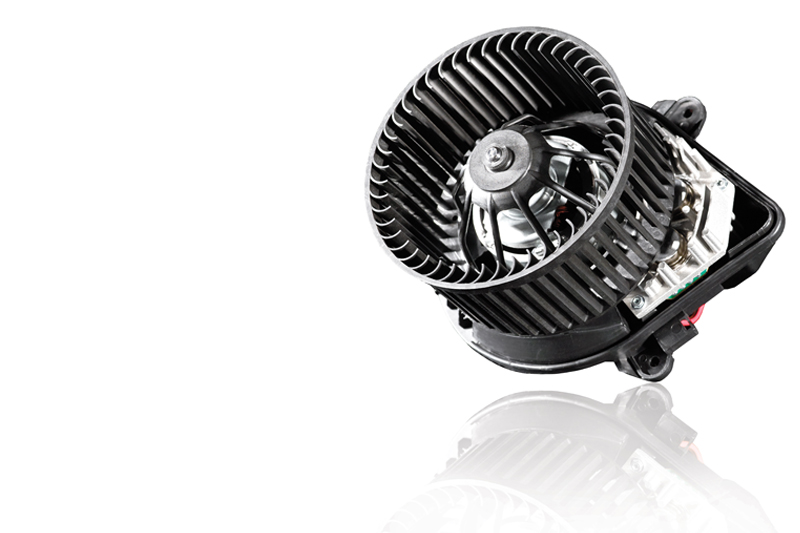
Nissens looks at some common malfunctions and troubleshooting with interior blowers.
Background
Interior blowers transfer warm/cold air (depending on the set temperature) from the heater/evaporator to the passenger cabin. At the same time, the blower ensures that the evaporator is performing properly by maintaining airflow through the evaporation process.
In most cases, the blower is situated in the HVAC (Heat-Ventilation-Air- Conditioning) module and has an average lifetime of eight years. However, an ineffective air filter or high mileage can severely affect the lifespan of the blower.
Problem
There are many potential reasons behind blower malfunction. The issue might arise right after installation, or show itself at a later point. Furthermore, problems can be caused by failure to change the cabin filter regularly. Other parts of the car’s electrical circuit can also cause problems for the blower. A malfunctioning generator, for instance, can overload the electrical system, which will result in the blower malfunctioning.
The same effect can be seen when a car is jump-started. A jump-start will, for a short period, add up to 24V to the system, which could potentially overload the blower. In some instances, simply starting the car can also cause the blower to malfunction, as excess voltage from the system can cause a voltage spike.
Recommended solution
Three factors are crucial when handling the blower. The factors are: the vehicle’s electrical system, component quality, and proper product handling. It is, as a minimum, recommended that you change the blower every eight years. After this point, the risk of the blower malfunctioning increases greatly.
During the blower’s lifespan, it is important to maintain regular service intervals. Cabins with plastic interiors can increase humidity and condensation, which, in the worst cases, can cause corrosion around the carbon brushes. When installing a blower, it is important that the wheel is protected – during both transport and mounting. Even minor disturbances to the wheel can cause the blower to become out of balance. A blower that is out of balance is a noisy blower.
It is also important that the screws are not over-tightened during mounting. This can break the plastic brackets, causing the blower to vibrate and generate noise in the cabin. It is also crucial to always ensure that the replacement fuse has the correct ampere value. If the ampere value is too small, the fuse will burst, and if the ampere value is too high, the system will overcharge, causing the blower to malfunction.
Malfunctioning blower troubleshooting
If the blower does not start when activated from the control panel inside the car, regardless of the speed selected:
- Check if the fuse is blown. If this is the case, replace the fuse with a new one. Make sure that the ampere value of the new fuse is the same as the old fuse.
- Check if the connector to the blower is mounted correctly.
- Check if foreign objects, such as leaves, are blocking the blower wheel.
- Check if there is a generator error, and if the generator produces the correct amount of voltage for the blower.
The blower only starts at certain speeds:
- One or more of the power resistors of the blower is/are defective.
- If the power resistors are integrated parts of the blower, the blower must be replaced.
The blower is very loud, and it sometimes makes a squeaky sound:
- The blower has a mechanical defect and must be replaced with a new one. This could be caused by an unbalanced wheel, or wear of the carbon brush elements.
The blower runs slowly or varies in speed:
- The carbon brush elements are defective and the blower must be replaced by a new one.









